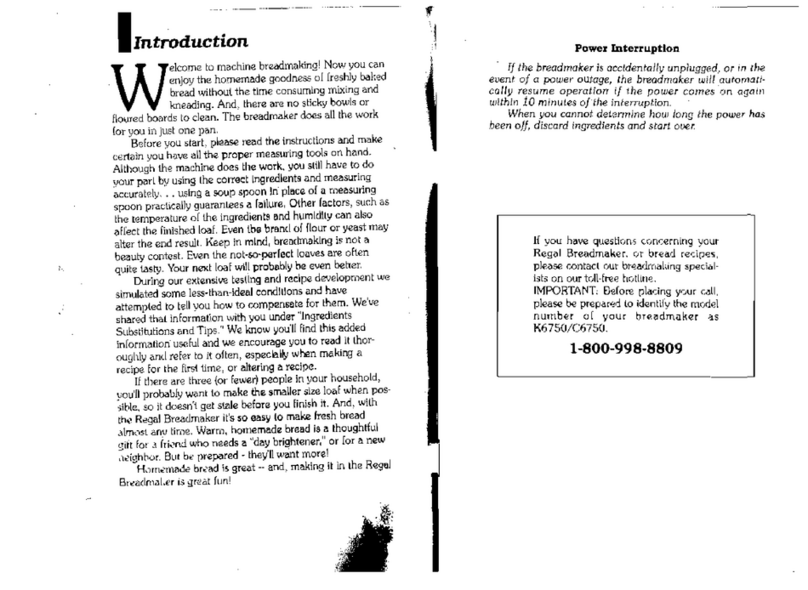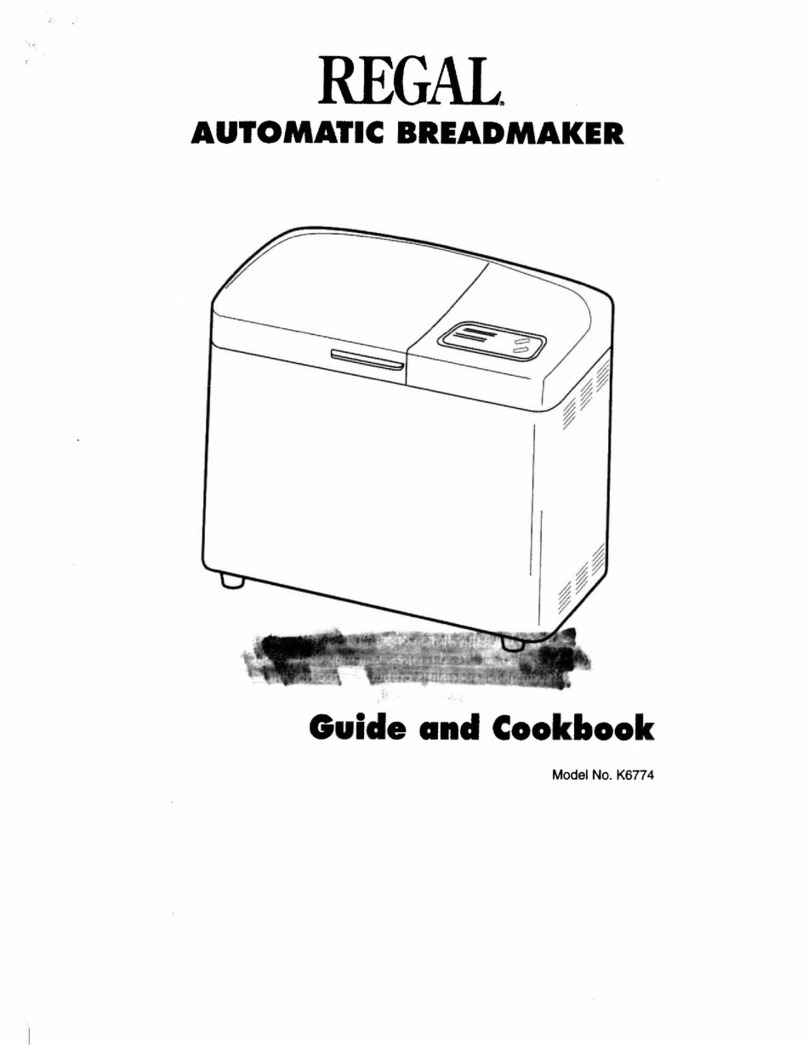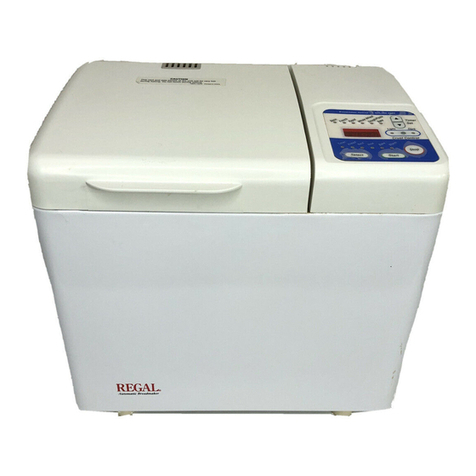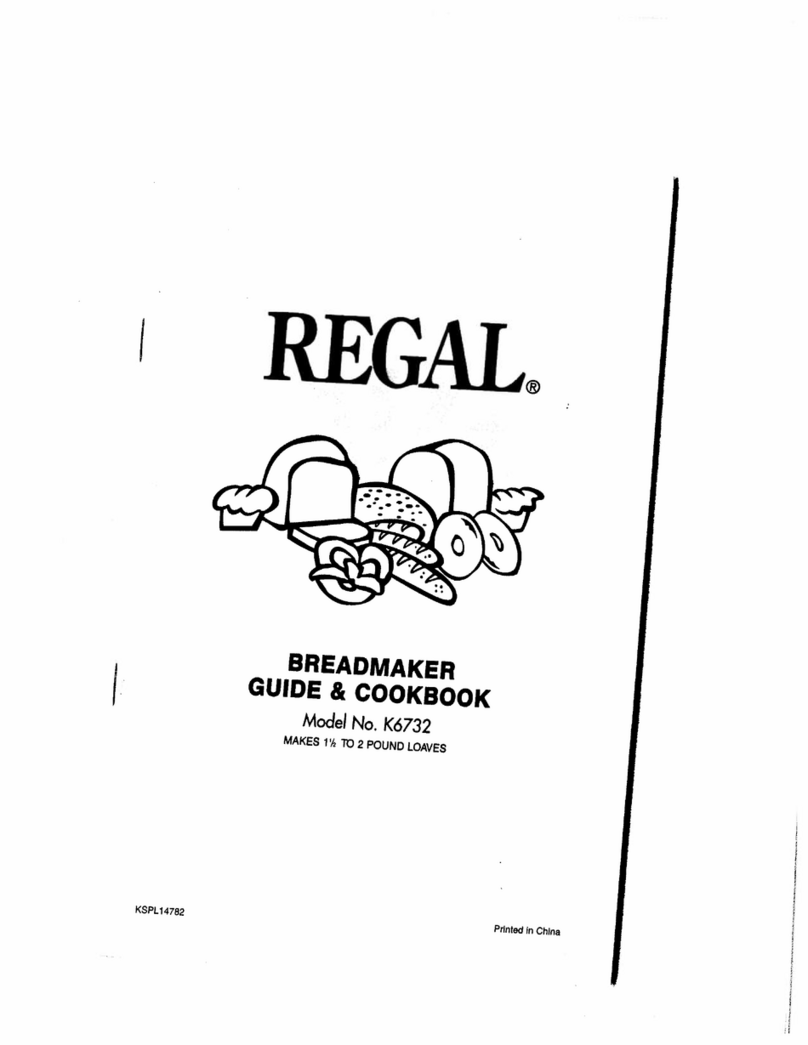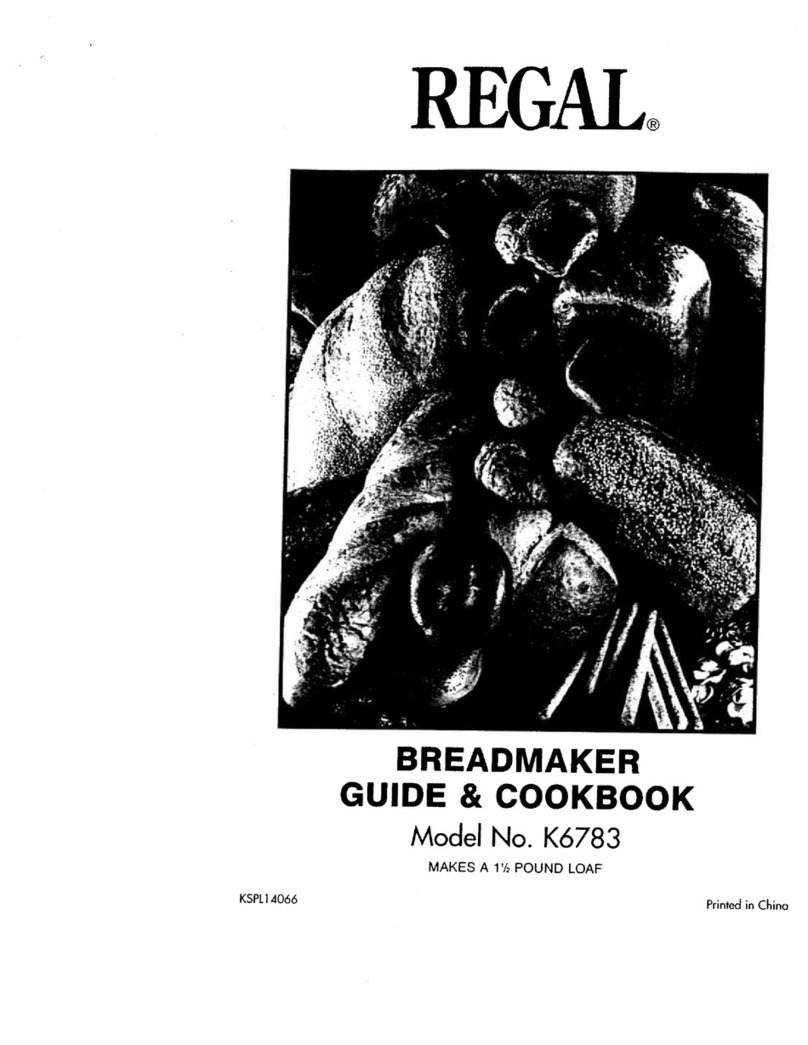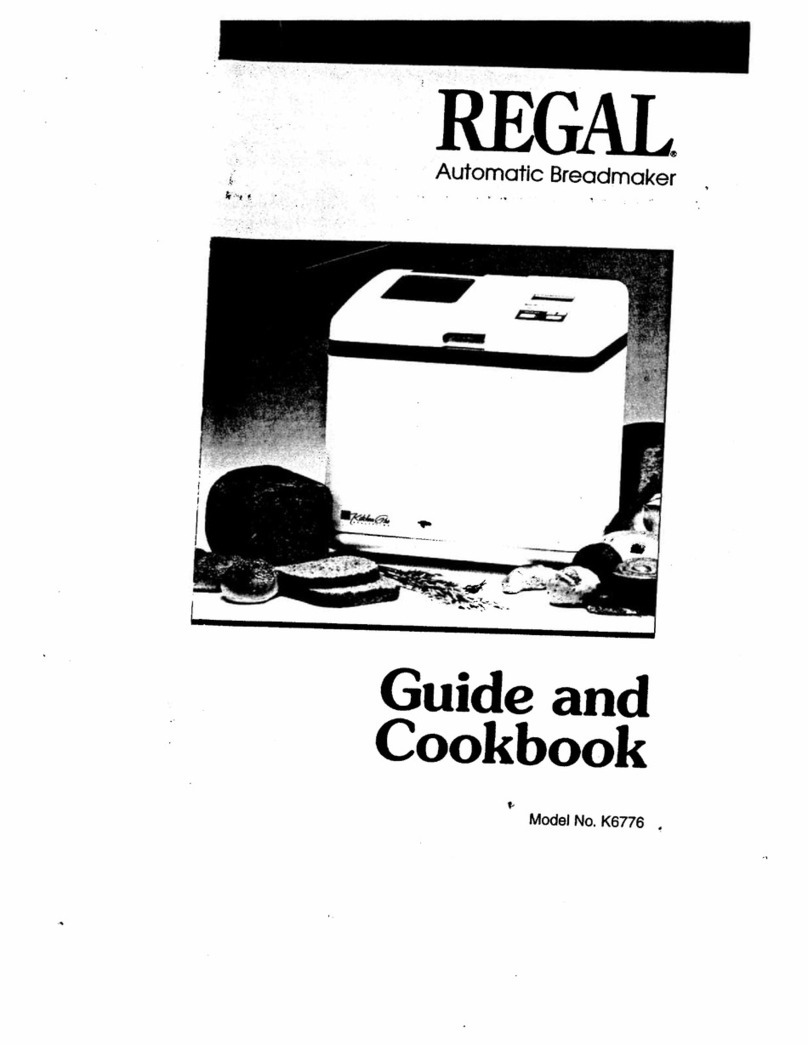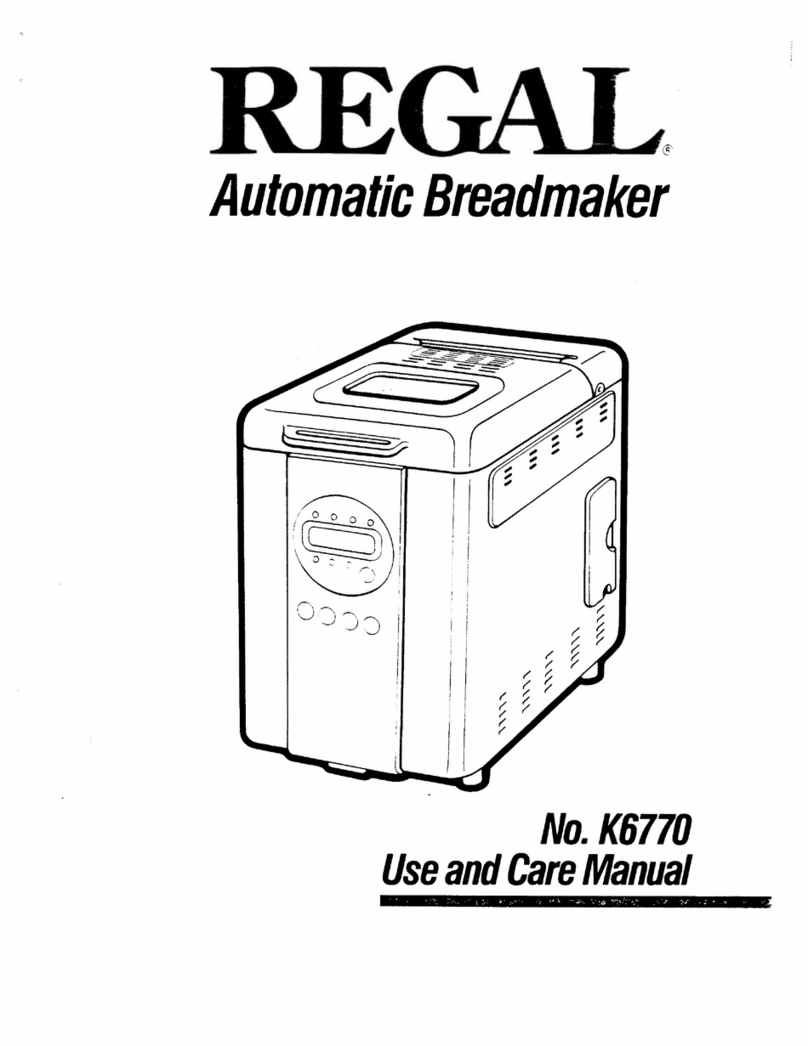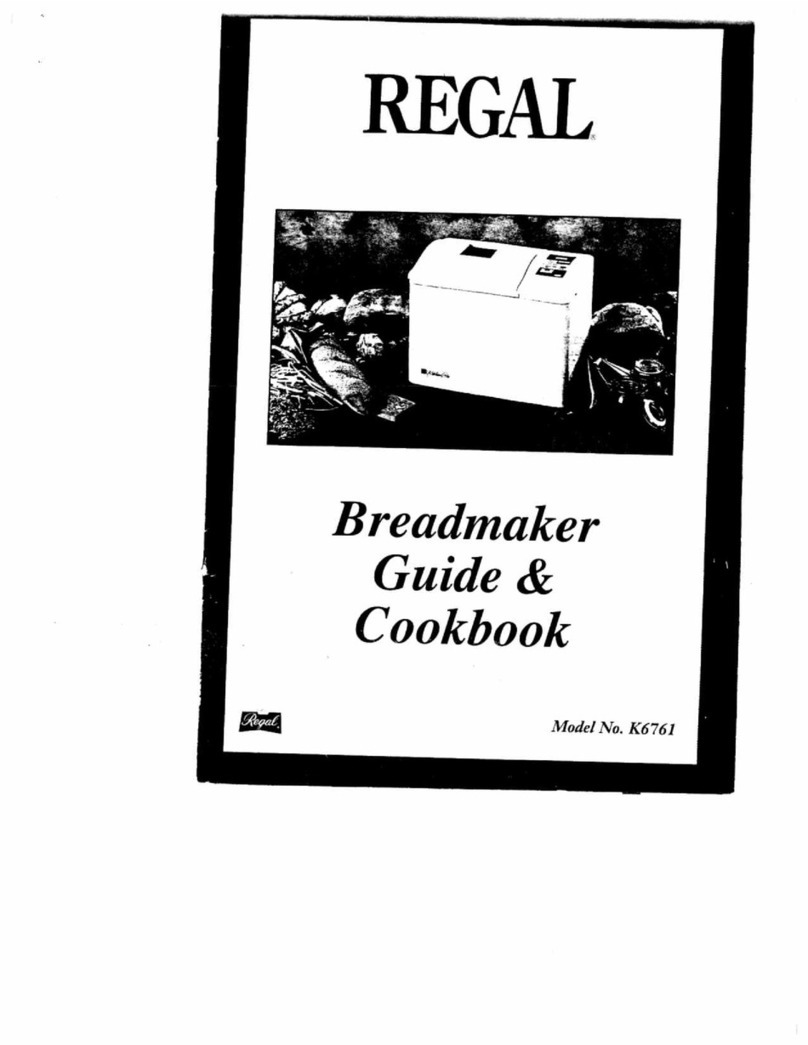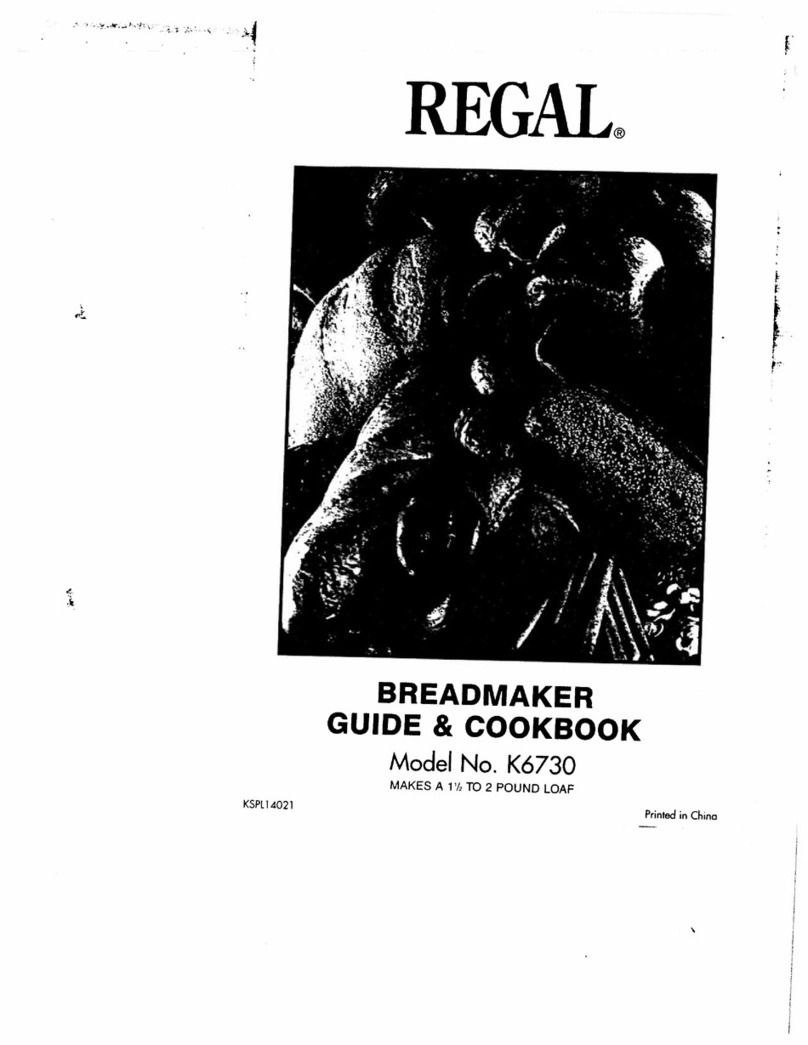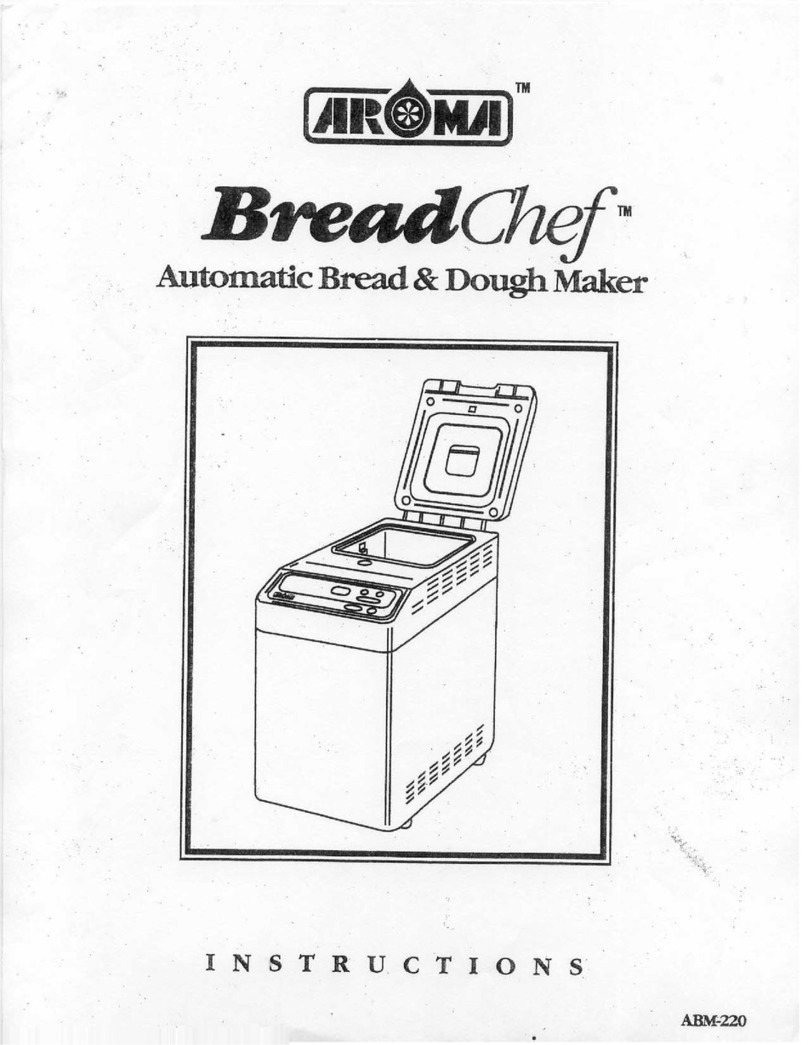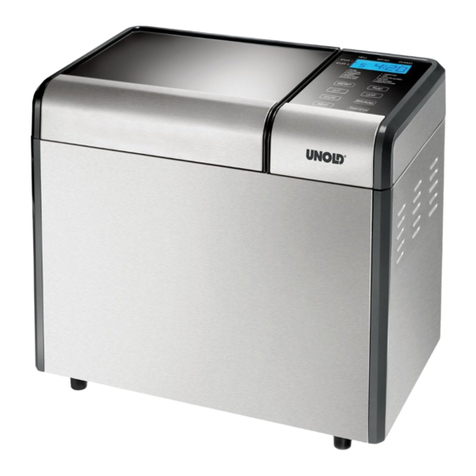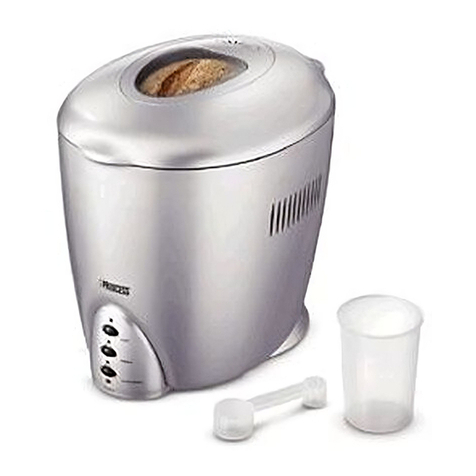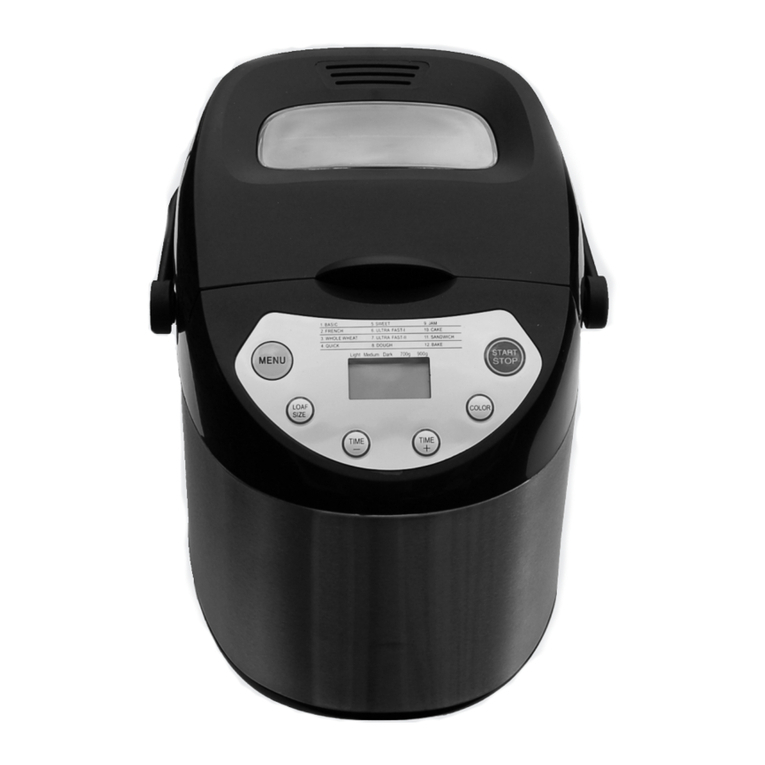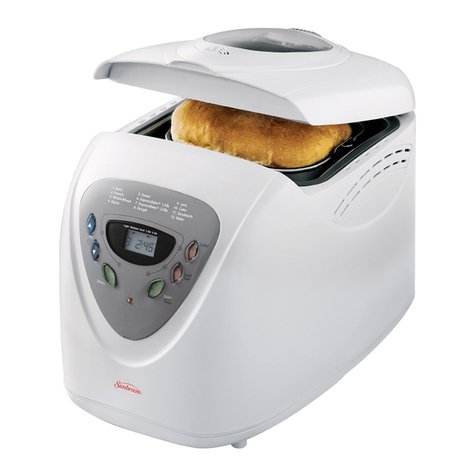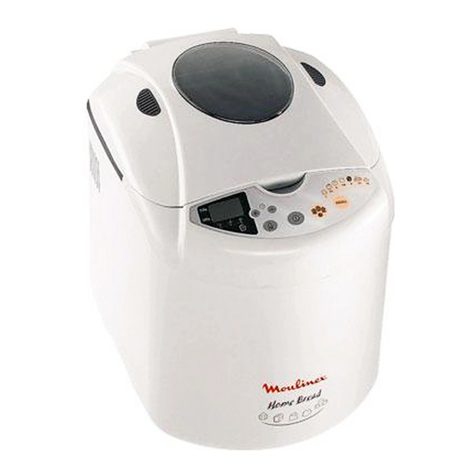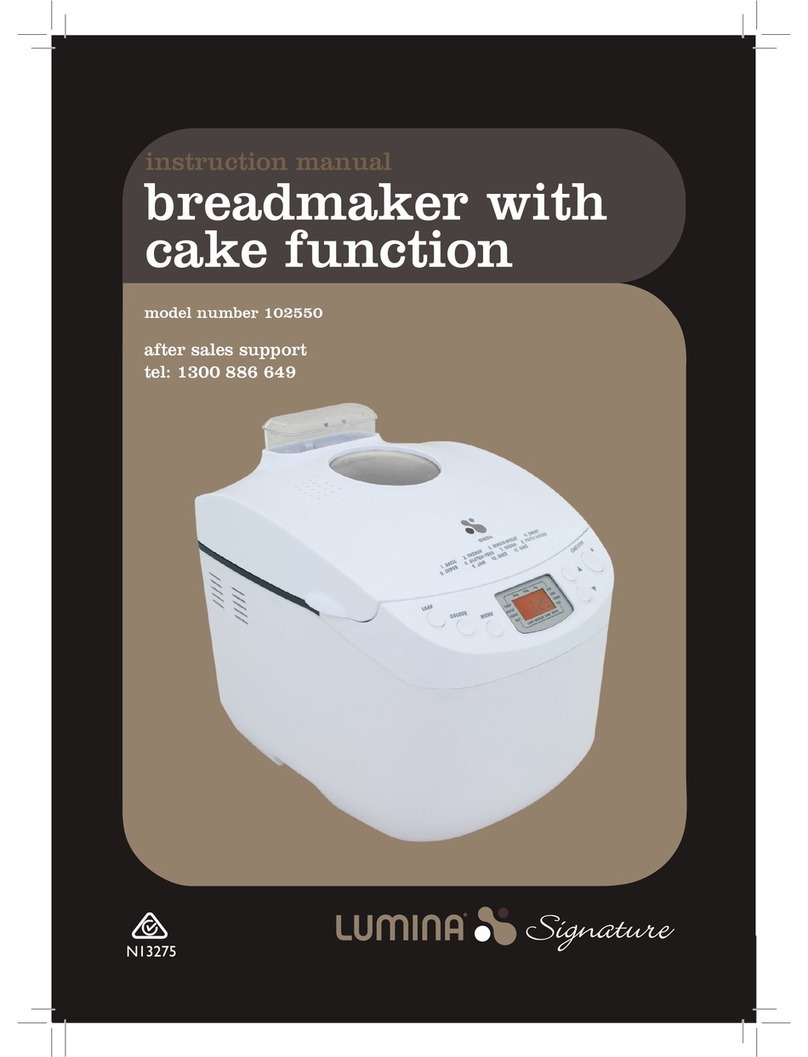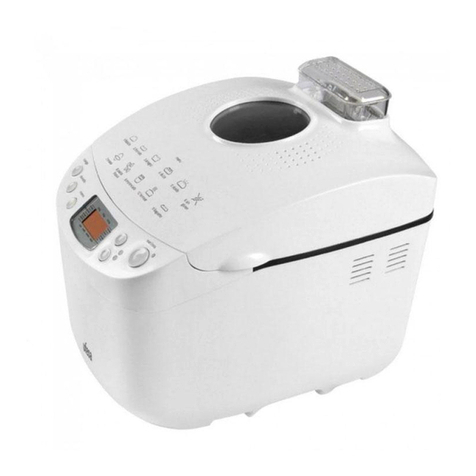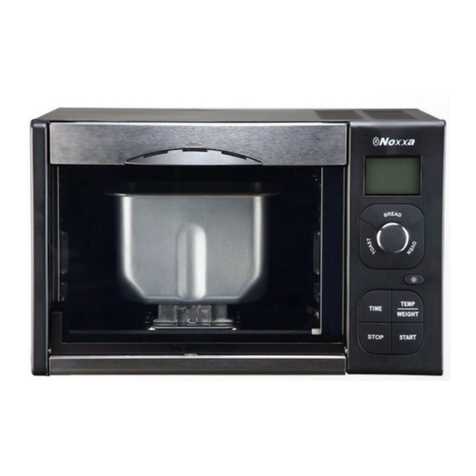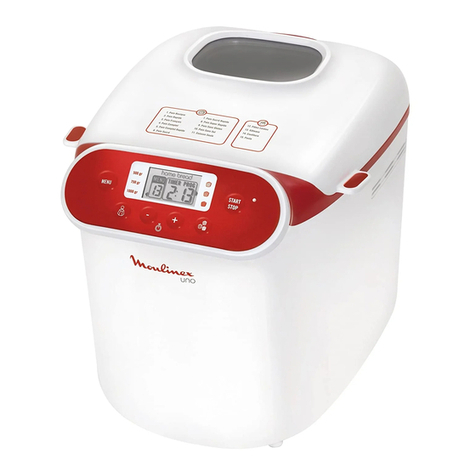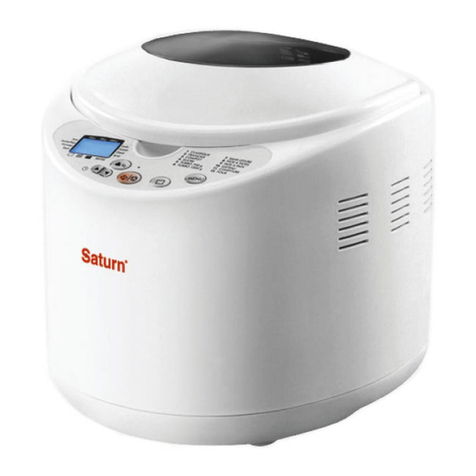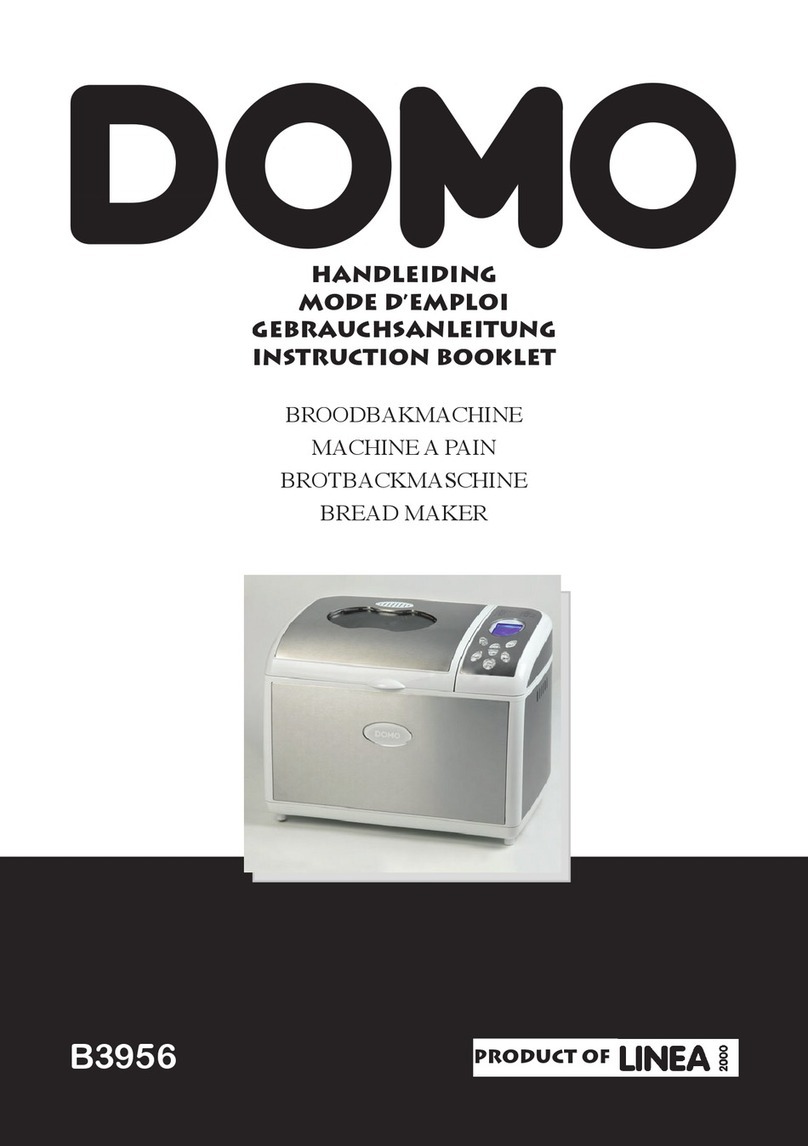FLOUR:
Should be stored in a cool dry place (70°F/21°C or less). For
maximum shelf life, flour may be stored in the refrigerator or
freezer. If stored correctly, flour will stay fresh up to two years.
Always bring flour to room temperature before using it in your
breadmaker. To measure accurately, spoon decanted flour into a
standard dry measuring cup, then level off with the straight edge of
a knife or spatula.
Bread Flour is milled from hard wheat and contains a higher
percentage of protein than regular all-purpose flour, usually 14% or
higher. This is also referred to as the gluten content, which gives
structure and height to bread. If bread flour is not available in your
area, all-purpose flour with a protein content of 14% or higher is
an acceptable substitution. Bread flour requires no sifting.
Whole Wheat Flour, sometimes called graham flour, is milled
from the entire wheat kernel. It is light brown in color and contains
all natural nutrients. It is lower in gluten and is usually used with
bread flour. Vital gluten may be added to give the whole wheat flour
a lift especially in 100% whole wheat bread recipes. No sifting is
required.
Rye Flour is a heavy flour milled from rye grain. It is low in gluten
and needs to be combined with bread flour to get an acceptable
loaf. Many rye bread recipes include vinegar or lemon juice to assist
the structuring of the dough. Rye flour usually produces a stickier
dough. No sifting is required.
Rice Flour, Tapioca Flour or Potato Starch are used primarily
in making gluten-free breads to accommodate those with certain
allergies. Other proteins are usually added to make up for the lack
of gluten (i.e. cheese, xanthan gum, etc.).
LEAVENING:
Yeast is the primary leavening agent used in the recipes in this
booklet. Too little yeast can result in improper rising. Too much
yeast can cause over-rising and the dough could stick to the inside
of the cover; or it could collapse during baking. When combined
with sugar and water at the right temperature, yeast generates
carbon dioxide which makes the dough rise. The recipes in this
booklet have been developed using active dry yeast which we
recommend using as it is the most stable and forgiving of all the
different types available. If you prefer to use a fast-rising yeast, such
as Quick Rise or Rapid Rise, merely decrease the amount used. As
a general guide, we recommend using ½ teaspoon of fast-rising
yeast per cup of flour. Example: 3 cups bread flour would require
I_ teaspoons of fast-rising yeast.
18
•Baking powder and baking soda may be used to assist yeast
or on their own as leavening in quick breads which require no
kneading or rising. Recipes with baking powder and baking soda
are different than yeast recipes. Leavening agents cannot be
substituted for one another.
LIQUIDS:
Liquid is necessary to moisten and bind the proteins in flour
together and to assist the yeast to flourish. Liquids such as beer,
fruit juice or pur@es can be used as the liquid in bread recipes.
Water is the most common liquid used in bread making. It
produces a heavier, crisper crust and a more open texture.
Milk enhances flavor and increases the nutritional value of the
bread but it is not a necessary ingredient. Other liquids can be
substituted. For best results, always bring milk, or other liquid to
room temperature.
Buttermilk results in a light, high rising and tender bread.
Buttermilk also helps bread stay fresh longer. To offset the acidity,
add ¼ teaspoon baking soda per cup of buttermilk.
SALT:
• Salt controls the action of the yeast, enhances flavor and aids in
producing a firm dough. If you are on a restricted diet, feel free to
cut the amount of salt in the recipe in half or use a low sodium salt.
If you elect to use a "light salt" it must contain both potassium
chloride and sodium. Plain potassium chloride will not work. You
may decide to eliminate the salt, but this will affect the size, texture
and taste of the bread.
SWEETENERS:
• Sugar boosts yeast action, adds sweetness and aroma, and makes
the crust brown and the bread soft.
•Brown sugar, honey, molasses or syrups produced from
maple, corn or cane are also suitable sweeteners that add vitamin
B and minerals.
FATS:
Any form of solid shortening or oil can be substituted for one
another in same amounts. Fat enriches bread's flavor, and keeps it
tender and moist. Do not use diet spreads or tub-type
margarines as they will affect quality.
Butter adds flavor. The same amount of vegetable shortening or
oil can be substituted. Salted or unsalted butter may be used. Soft
spreads will NOT work.
Margarine is an acceptable substitute for butter. Do not use
whipped or diet margarines.
19

